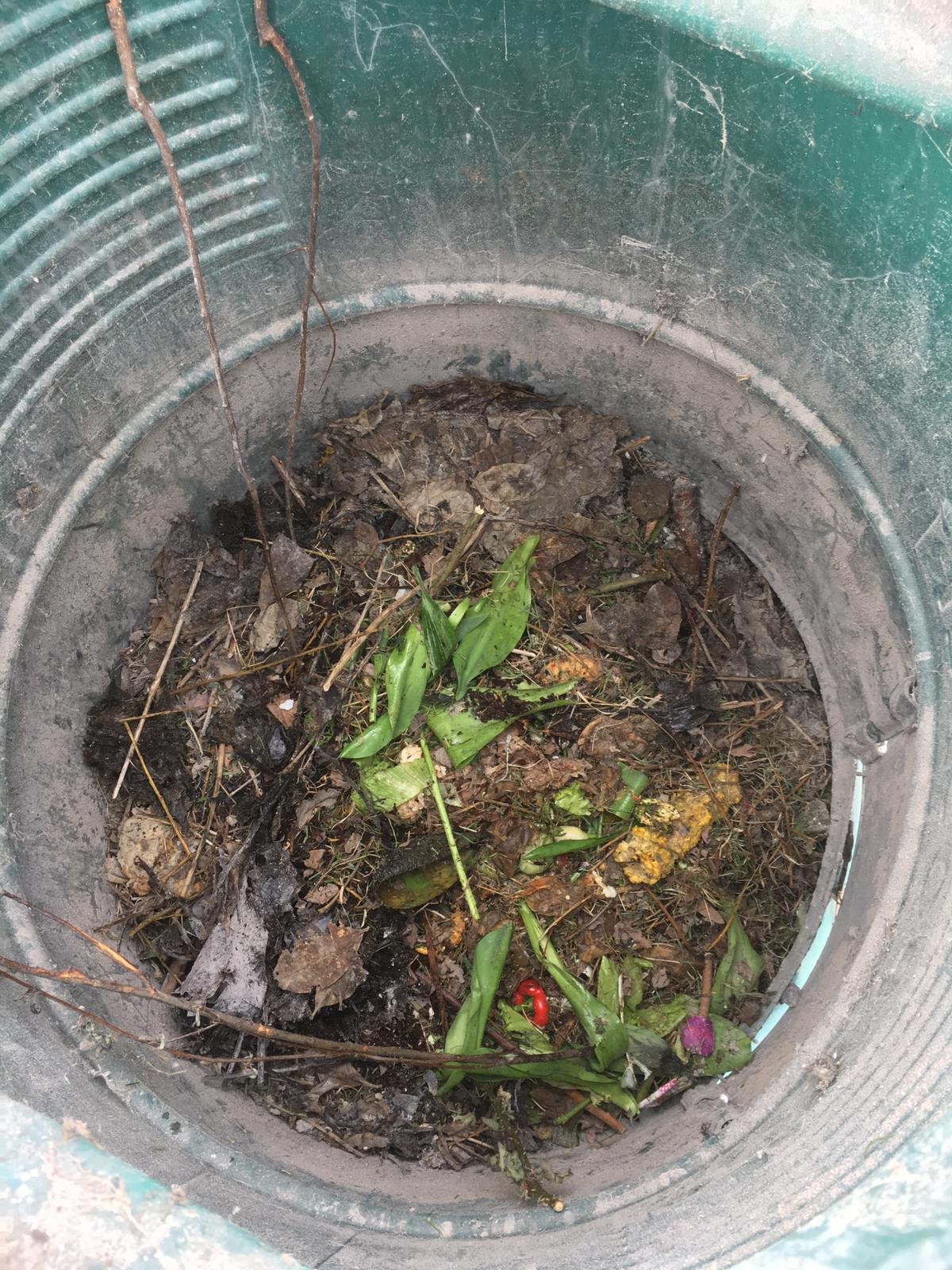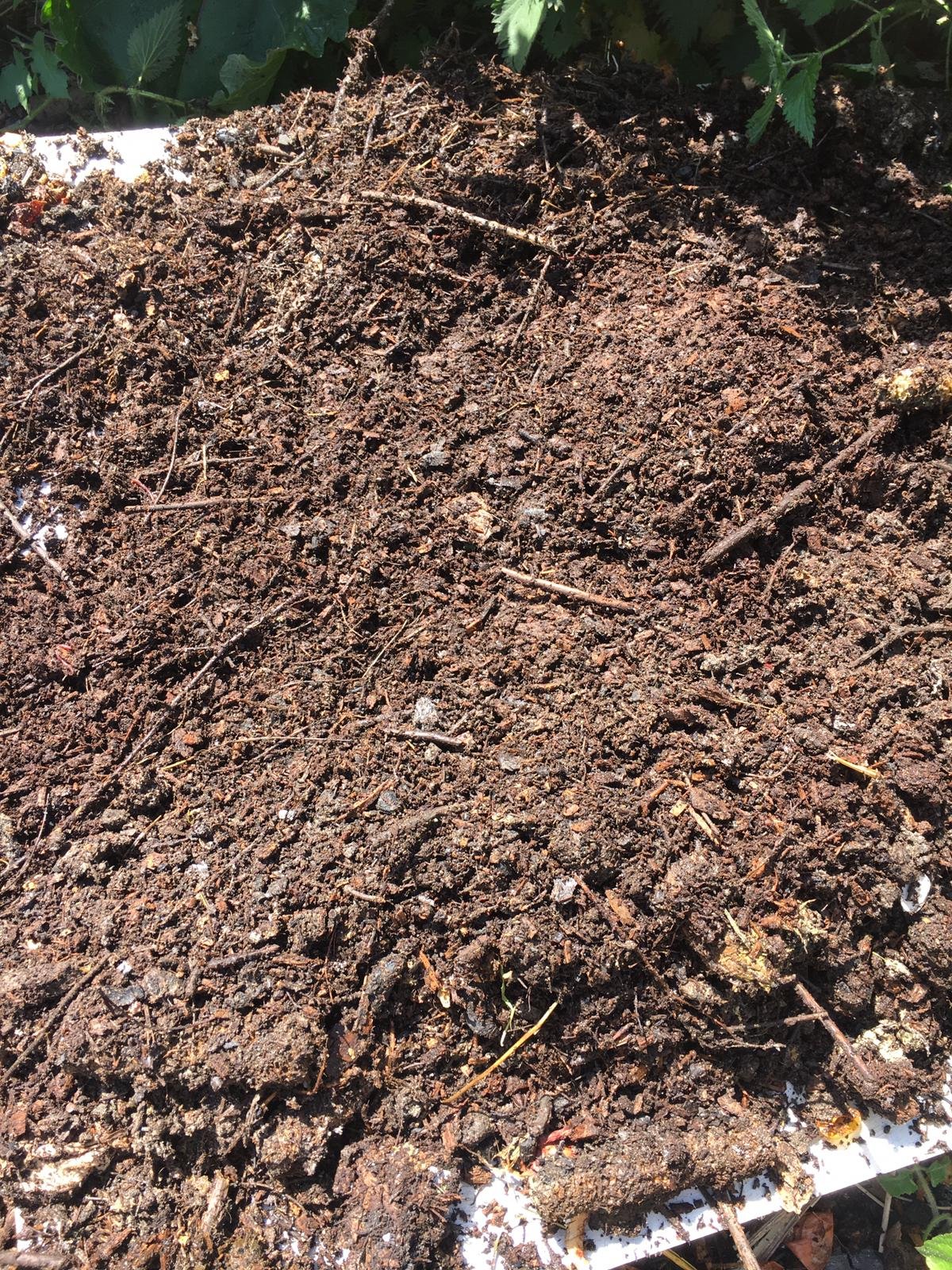Composting: Putting your glamping food waste to better use
Our site manager, Harry Cobb, undertook a permaculture course while living and travelling in New Zealand. In his first few weeks at Home Farm Glamping, he’s been working on building a hot composting system to put our guest’s food waste to better use. With half term around the corner, why not look to build a composting heap in your garden? Here’s Harry to explain how and why…
The Extraordinary Brilliance of Soil
Let me admit a very niche and nerdy passion: I’m obsessed with soil!
Proper soil is so much more than just ‘dirt’. Good, healthy topsoil is a surprisingly complex and fascinatingly rich mixture of components. Formed from rocks dissolved by water, it contains important minerals such as calcium, phosphorus, potassium and magnesium - all of which are used by plants to grow. It also contains a variety of different organic materials from decaying plants and animals, and animal dung, all of which infuse soil with carbon and nitrogen, two vital macronutrients for plant growth.
As well as providing the medium for all plant life to grow in, soil is a habitat for countless animals including mammals like rabbits, moles and badgers; birds such as meadowlarks, warblers and wood thrushes; earthworms, beetles and a variety of insects; amphibians; and smaller life-forms like fungi, mycelium and protozoa.
It is also alive! Just a single teaspoon of rich soil can contain over one billion bacteria, from 10,000 different species. These bacteria are all essential for breaking down minerals into usable forms and exchanging these with the root cells of plants; as well as protecting plants from disease. Without these bacteria, soil would just be a dead heap of clay or dusty sand. No plant life could grow, and all the ecosystems and food chains dependent on soil (ie, all ecosystems!) would completely break down.
“The health of soil, plant, animal and man is one and indivisible.”
The Death of Soil
Unfortunately, many modern industrial farming practices are leading to the death of the soil. Over-application of fertilisers disrupts the natural recycling of molecules from the atmosphere. Pesticides kill off all the helpful bacteria, as well as pollinating insects. And tilling the fields to expose the bare soil means that many of the vital minerals and nutrients simply blow away in the wind, or are carried off by rainfall into watercourses. These processes heavily degrade the quality of the soil and rapidly reduce its fertility.
Here at Home Farm, due to many years of intensive arable farming, much of the soil is in a pretty poor state of health. Many of our conservation efforts - from tree planting and rewilding, to our upcoming plan to create a market garden - rely significantly on improving the health and availability of good soil.
No Such Thing as Waste
Home Farm Glamping has another problem to deal with: Since last year, our local waste removal service is no longer taking away our food waste. With all the glampers coming through here between April to October - not to mention our big events like Woodfired Canteen, weddings, and parties - we see a lot of unwanted food being thrown away.
Food that ends up in landfill - buried underground with no exposure to air - is decomposed by anaerobic bacteria. One of the major by-products of this process is methane - a potent greenhouse gas. So, we are determined to stop sending food waste to landfill and repurpose to help the estate.
Last year, I completed an intensive permaculture course at The Eco School in New Zealand. Permaculture is a method of organic farming that - as well as regenerating and restoring the landscape - aims to be a closed-loop farming system. We were encouraged to think of all ‘waste’ products as beneficial assets that could be transformed or otherwise used productively in another part of the system. Food scraps are not garbage, but a valuable resource.
Applying this kind of thinking, we can kill two problems with one stone: Hot composting!
Fortunately for everyone (and the planet), making soil is actually reasonably straightforward: anyone can do it at home with just a bit of outdoor/garden space. In fact, if you already have a compost pile of either food or garden waste (like lawn-trimmings), you’re currently making soil as we speak. The only problem is the normal decomposition process is quite slow - a pile can often 4-6 months to break down. We need to go faster!
Using the following method, it’s possible to engineer an explosion of those helpful soil bacteria and microbes, who will go wild happily munching on your compost pile, heat the whole thing up and break it all down into 100% pure organic soil in as little as 6-8 weeks.
Home Farm’s Secret Soil Recipe
Ingredients:
4 parts Carbon (see suggestions below)
1 part Nitrogen (see suggestions below)
Water
A spadeful of ‘starter’
For your carbon, any one or a mixture of the following materials will do: Dead leaves and twigs, wood chips, sawdust, wood ash, shredded paper/cardboard, straw. Twigs are especially useful for helping the pile to aerate.
For your nitrogen we are using all food waste from the site, including fruit and vegetable scraps, meat, egg shells, tea bags and coffee grounds. You can also use fresh lawn trimmings or animal manure as a nitrogen source.
Putting your glamping waste to better use
At Home Farm, we have lots of all these materials going to waste, so I have tried to use most of them - while maintaining the right ratios. Using a broad range of ingredients means that by the end, the soil should contain lots of great micronutrients like phosphorus and magnesium, which are great for plants.
The wonderful thing about hot composting is that you can add anything made from an organic material. If it was once alive, it can go in! So wool, cotton and linen are also fair game. On my course, our hot compost pile digested an entire wool scarf in about two weeks!
The only thing I would absolutely avoid is tobacco. Although tobacco is organic matter, the various compounds it contains like hydrogen cyanide will likely kill off the bacteria. Further down the line, they will remain as contaminants in your soil. I would also tend to avoid chillies, at least in large quantities.
Our tips and tricks on how to make a hot composting heap in your very own garden. Here’s how…
1) Chop up your ingredients into fairly small pieces: the greater surface area for the bacteria to work on, the better. Some sites recommend running it over with a lawnmower first - I tend to just chop it up with a spade.
2) Next, simply layer all your materials into a pile, about 4 feet across and four feet high is best.
3) As you layer on material, occasionally chuck in small handfuls of soil from your garden, or pre-bought compost mix. This will act as your compost’s starter. Much like a sourdough starter, it will already contain the bacteria and microbes that we want to proliferate throughout the pile.
4) Water each layer thoroughly as you go. It should have the dampness of a squeezed sponge.
5) Mix all your ingredients up thoroughly.
6) Your pile is now ready to go. To maintain it, all you need to do is check that it still has the right amount of moisture, and turn it every 2-3 weeks. Turning it semi-regularly allows the air to penetrate the middle of the pile, and prevents the bacteria becoming anaerobic (resulting in a smelly sludgy mess).
Once it has broken down all the way into a dark, rich, earthy-smelling soil mix, you can go ahead and spread it on your garden or vegetable patch. Your plants will love it!
We would love to see pictures from of your compost heaps at home in the comments below! If you would like any advice, feel free to drop us an email to info@homefarmglamping.com!




